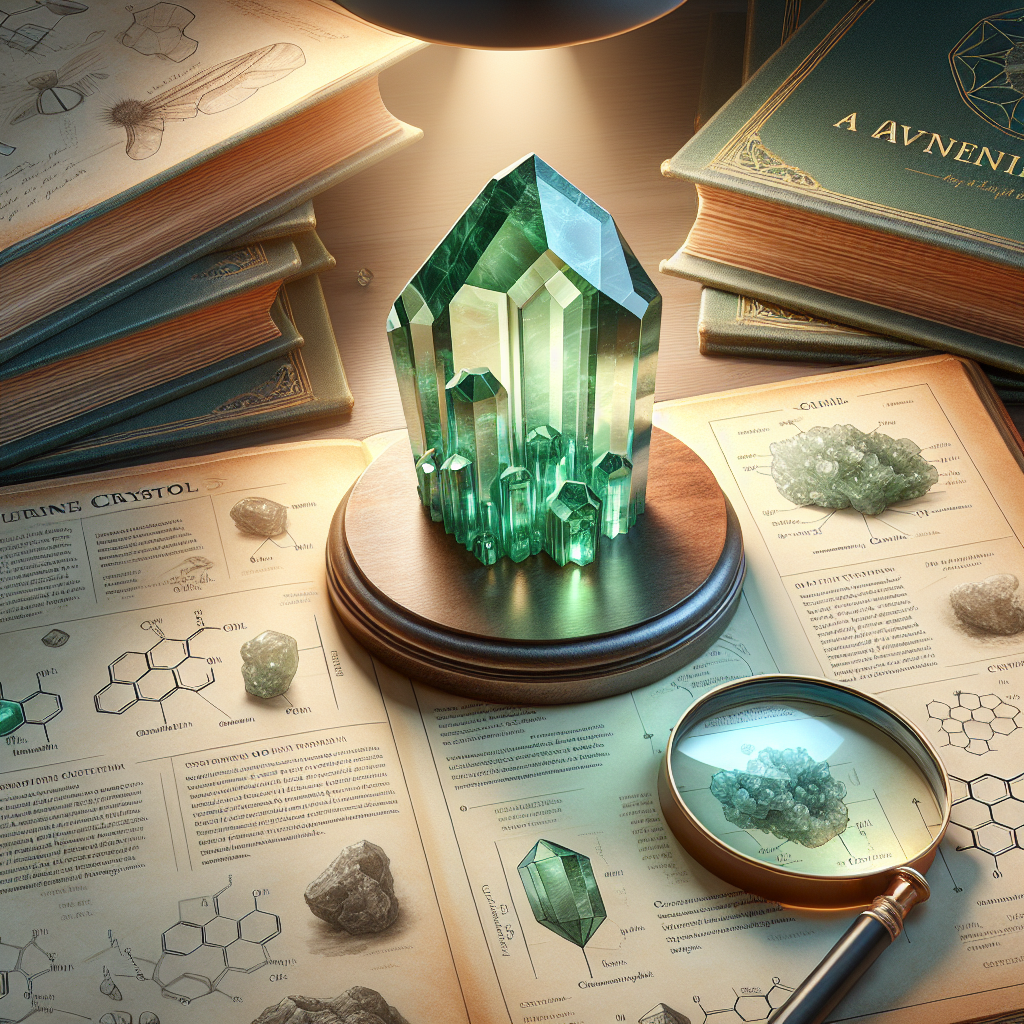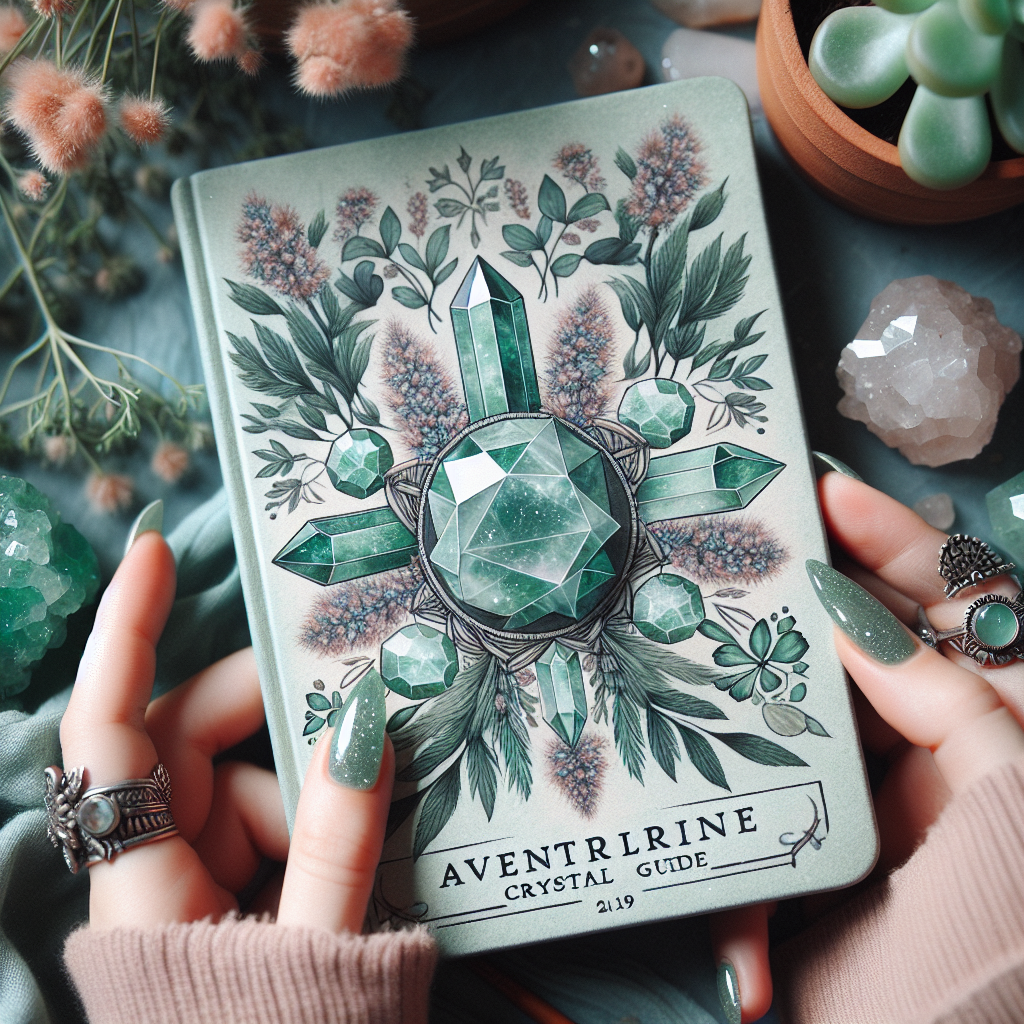As an Amazon Associate I earn from qualifying purchases.

Aventurine is often known as the “Stone of Opportunity,” believed to be the luckiest of all crystals, especially in manifesting prosperity and wealth. This shimmering stone owes its unique glitter to minute platelets of inclusions such as mica or hematite, which provide a metallic sheen known as aventurescence. Primarily found in green, aventurine can also be orange, brown, yellow, blue, or gray.
Tracing its roots back to the 18th century, the name “aventurine” comes from the Italian phrase ‘a ventura,’ meaning ‘by chance’. It is said to have been discovered by accident when Venetian glass workers dropped metal filings into molten glass, creating a stone with a sparkling effect similar to the naturally occurring mineral. Since then, aventurine has been used in various decorative and jewelry items, and is believed by some to attract abundance and to enhance the decisiveness and leadership qualities of those who wear or carry it.
Besides its aesthetic and metaphysical properties, aventurine has practical applications as well. It’s a component in building materials and is also used in the production of glassware. Interestingly, small sculptures and figurines often carved out of green aventurine are popular in many cultures as they are thought to bring good luck to households and businesses.
In Chinese culture, aventurine is associated with the mythical “Laughing Buddha,” and is considered powerful in attracting good fortune, abundance, and happiness into one’s life. Additionally, fine-grained aventurine from India is known to contain up to two percent of spangled lead, which is thought to enhance the stone’s reflective properties thus making it highly sought-after for its vibrant luster in the international gem market.
Despite the enchantment held by aventurine in various mystic and healing circles, it is mineralogically classified simply as a variety of quartz or feldspar. The geological process through which aventurine forms allows the inclusions that give it its characteristic glitter to be dispersed rather uniformly, making each piece uniquely exquisite while still maintaining a family resemblance in its overall appearance.
`
What is Aventurine and How Can It Enhance Your Life?
`
Aventurine is a unique and mesmerizing mineral, prized for its sparkling inclusions and purported metaphysical properties. Often recognized by its shimmering effect, known as aventurescence, this semi-precious stone comes in a variety of colors, with green being the most common and popular. It’s believed by many to be a stone of prosperity, offering the wearer opportunities for personal growth, healing, and the amplification of one’s intentions in areas of wealth and abundance. Historically, aventurine has held a place of reverence in various cultures for its ability to calm the spirit and foster a sense of tranquility. As we delve deeper into the Aventurine Crystal Guide, we will explore the origins of this glittering gem, its diverse applications in jewelry and healing practices, and how incorporating aventurine into your life could potentially usher in an era of wellbeing and fortune.
Understanding Aventurine
Aventurine is a variety of quartz characterized by its translucency and the presence of platy mineral inclusions that give it a shimmering or glistening effect, known as aventurescence. The inclusions are typically composed of muscovite mica, which can range in color from silver to coppery red, depending on the type of aventurine. Most commonly, this mineral is found in a green color, but it can also be orange, brown, yellow, blue, or gray.
Origins and Formation
Aventurine is formed by the metamorphism of quartz-rich rocks. The conditions under which it forms include low temperate and pressure settings where the growth of mica inclusions can align within the quartz. This unique mineral is primarily extracted from deposits in India, Italy, China, Brazil, Russia, Tanzania, and Nepal.
Metaphysical Properties and Uses
Aventurine is more than just a pretty gemstone. In the realm of crystal healing, it is associated with prosperity, courage, and confidence. It is believed to promote a feeling of well-being and to help in various aspects of life such as decision-making, creativity, and leadership. Crystal enthusiasts often use aventurine as a stone of luck, especially for attracting wealth and abundance.
Different Colors, Different Impacts
While green aventurine is the most recognized form of this mineral, aventurine comes in various colors, each reputed to have its own healing properties. For example, blue aventurine is said to enhance communication and mental clarity. On the other hand, red aventurine is thought to renew excitement and confidence in bringing one’s projects, relationships, and aspirations to fruition.
Aventurine Crystals in Jewelry and Decor
Due to its charming appearance and positive reputation, aventurine is popular in jewelry making. It can be fashioned into beads, cabochons, or polished into unique shapes for pendants and rings. The gemstone’s durability allows for versatile use, making it suitable for everyday wear. Furthermore, its aesthetic and healing properties make it a common choice for home decor items, such as sculptures, bowls, or as smoothly polished stones for display.
Scientific and Economic Significance
In scientific communities, aventurine serves as a point of interest for studying mineral inclusions and silica-rich rocks. Economically, the gemstone market depends on pieces like aventurine for their consistent popularity in fashion and their appeal to gemstone collectors.
Environmental Impact and Sustainability
The mining of aventurine, as with any mineral, has a certain impact on the environment. Efforts are made to reduce this impact, including better mining practices and rehabilitation of mined areas. Some suppliers also follow ethical sourcing methods to provide environmentally conscious consumers with sustainable options.
Care and Maintenance
Aventurine requires proper care to maintain its sparkle. It should be cleaned with a soft cloth and mild soap, avoiding harsh chemicals. It’s also advisable to store aventurine away from harder materials that could scratch its surface.
Aventurine Crystal Guide: Popularity and Availablility
The aventurine crystal guide denotes that it is widely available and can be found in a range of qualities and sizes. It’s a popular choice for those looking to begin or expand their gemstone collections due to its accessibility and affordability.
To highlight the extent of aventurine’s popularity, a notable statistic comes from the global gemstone market analysis. As of recent data compilations, the colored gemstone sector, including stones like aventurine, accounts for approximately $2 billion to $3 billion of the total annual gemstone market. This is a reflection not just of aventurine’s beauty but of its enduring legacy and appeal across cultures and geographies.
https://youtube.com/watch?v=PxDtm8-22jE
1. What is aventurine and where does it come from?
A: Aventurine is a form of quartz characterized by its translucency and the presence of mineral inclusions that give it a shimmering or glistening effect known as aventurescence. These inclusions typically consist of fuchsite, a green chromium-rich variety of muscovite. Aventurine is primarily found in India, but it is also sourced from China, Brazil, and Russia.
2. What are the different colors of aventurine available?
A: Although the most common color of aventurine is green, it can also be found in blue, red, orange, brown, yellow, gray, or white. The color variations are due to the type and presence of minerals within the quartz.
3. How can I use aventurine in healing practices or as a part of my crystal collection?
A: Aventurine is often used in crystal healing practices for its supposed soothing properties. It is said to promote emotional balance, well-being, and calmness. Many people enjoy carrying aventurine as a pocket stone or wearing it as jewelry. It can also be placed in living spaces to promote a harmonious atmosphere.
4. How do I cleanse and charge aventurine?
A: Aventurine can be cleansed with water or a soft cloth and charged by placing it in sunlight or moonlight. It can also be cleansed with smoke from sage or palo santo. However, prolonged exposure to water or intense sunlight should be avoided to prevent damage to the stone.
5. How can I tell if my aventurine is genuine?
A: To determine if aventurine is genuine, look for slight variations in color and minor imperfections—these are natural features of authentic stones. If it has a perfect, uniform appearance, it may be synthetic or glass. You can also test for authenticity by examining its aventurescence; real aventurine will have a subtle glitter effect that is not overly flashy.
6. What is the Mohs hardness of aventurine?
A: Aventurine has a Mohs hardness of around 6.5 to 7, making it relatively durable for everyday wear. However, care should still be taken to avoid scratches and hard impacts.
7. Can aventurine help with physical ailments?
A: While there is no scientific evidence to support the healing properties of crystals, some practitioners of holistic medicine believe that aventurine can assist with various physical ailments relating to the heart, liver, sinuses, and the nervous system, among others.
8. Does aventurine have any specific associations with zodiac signs or chakras?
A: Aventurine is often associated with the zodiac sign Taurus, but it is believed to be beneficial for all signs. It is also commonly linked with the heart chakra, promoting compassion, empathy, and perseverance.
9. How should I store my aventurine?
A: Aventurine should be stored separately from other gemstones to prevent scratches. It can be wrapped in a soft cloth or kept in a fabric-lined jewelry box. It is best to keep it in a cool, dry place away from direct sunlight and extreme temperatures.
10. Can aventurine fade over time?
A: Direct sunlight and high temperatures can cause the color of aventurine to fade over time. To preserve the vibrant color of your aventurine, minimize its exposure to the elements.
Conclusion: Aventurine Crystal Guide
Aventurine, a quintessential crystal known for its shimmering elegance and metaphysical prowess, has been lauded for its healing properties that align with emotional tranquility, prosperity, and heart chakra activation. Its unique sparkling appearance, attributed to the presence of mineral inclusions, elevates it among other stones, marking it as a favorite for both jewelers and spiritual enthusiasts alike. Throughout the guide, we explored the various colors of aventurine, ranging from green to blue, each color embodying specific energies and potential healing benefits. Green aventurine, in particular, is celebrated for its ability to attract luck and abundance, while blue aventurine is associated with mental clarity and inner peace.
In addition to metaphysical attributes, we delved into practical applications and rituals involving aventurine. The stone’s versatility shines through its use in meditation, feng shui, and as jewelry, serving not only as an accessory but as a tool for personal growth and energy alignment. Incorporating aventurine into daily life can help foster a positive outlook, enhance decision-making abilities, and promote a deeper connection with nature’s harmonic balance. As a guide to aventurine’s wonders, we hope to have imparted an understanding of how this gemstone can be an empowering ally in the pursuit of well-being and the manifestation of one’s intentions.
Amazon and the Amazon logo are trademarks of Amazon.com, Inc, or its affiliates.


